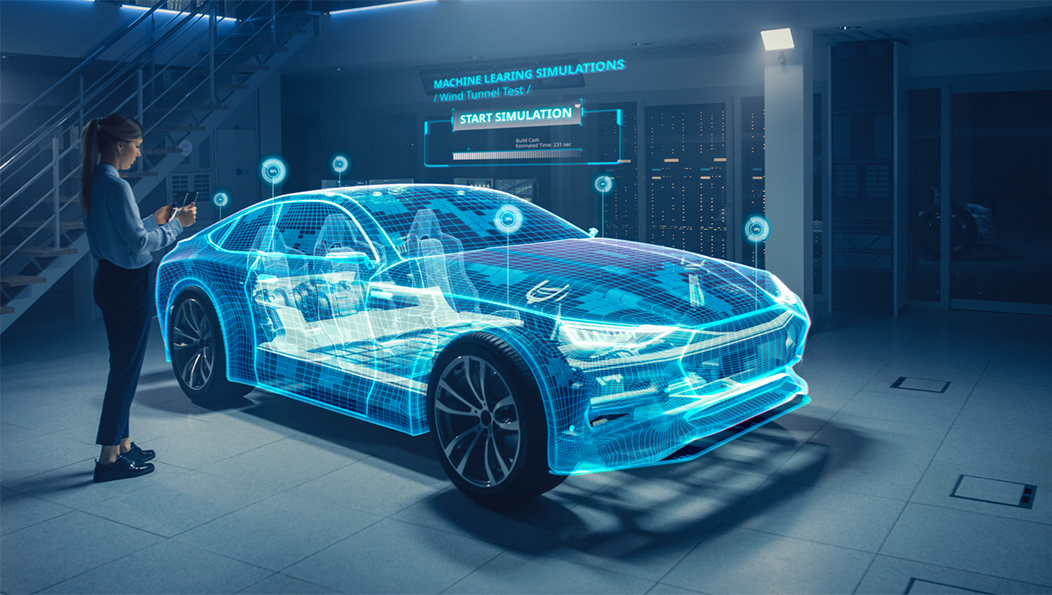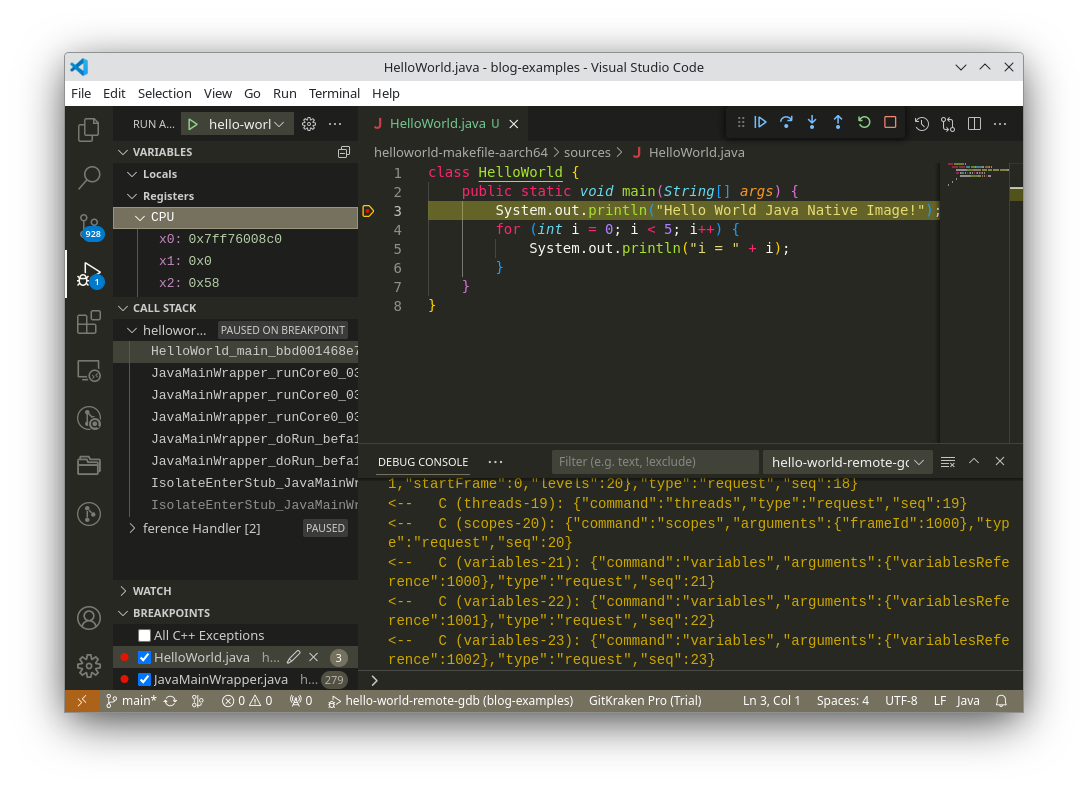The 2020s: the decade of software-defined mobility

Electrification, autonomous driving and all-embracing vehicle connectivity is fundamentally changing the way we move goods and people around, and the digitalisation of mobility has the potential to help us handle the huge challenges the world is facing regarding urbanisation, sustainability and climate change. No doubt, the 2020s will be the decade of software-defined mobility.
An average new car is managed by between 70 and 100 Electronic Control Units, andconstantly monitoring itself and its surroundings with hundreds of sensors.
To emphasisethe challenge, some call it “The Mother of All Tech Battles”: In our effort to digitalise,connect and automate every aspect of mobility, we need to handle steeply increasing systemcomplexity, cyber threats, new business models, and lawmaking issues, just to name a few ofthe many obstacles ahead.
As experts in embedded and IoT solutions, and a trusted andexperienced technology partner to the transport and automotive industry, at Data Respons weface these challenges on a daily basis. And based on that expertise we feel we have a fairlyclear view of the things to come in the 2020s, a decade that doubtlessly will bring enormouschanges in the mobility sector.
A computer on wheels
Thevehicle industry has come a long way since the introduction of the Cruise Control, the firstvehicle feature that integrated mechanical and electrical systems. That was in the 1950s.Now, cars are computers-on-wheels running millions of lines of code. An average new car ismanaged by between 70 and 100 Electronic Control Units, and constantly monitoring itself andits surroundings with hundreds of sensors.
Partly, this revolution has been triggeredby other technology areas, for instance telecom. There has been exponential growth in memoryand processor power, while components have become cheaper, smaller and more robust. On topof that, a set of new components like radar, infrared cameras and ordinary cameras are beingadded to the system, further increasing complexity on all levels.
Facing thiscomplexity, vehicle architecture is evolving as well. Currently, there are two mainapproaches in vehicle architecture: Either one large computer serving the whole vehicle or adistributed set of computers with a network between them. Both paradigms have their pros andcons, and it remains to be seen which approach will prevail.
Increasingamounts of data
However, as autonomous driving is slowly developing,component and system complexity is increasing, and with it the amount of data to beprocessed. To handle that complexity it is tempting to look for inspiration in aerospace andaviation, or similar domains operating complex, mission critical systems. That makes goodsense, e.g. when it comes to data analysis, as these areas produce a lot of data to beprocessed, analysed and combined in the most efficient and correct ways.
But there isa difference. In aerospace and aviation you operate in controlled areas, and traffic isheavily regulated. Though obviously not without risk, it happens in a fairly controlledenvironment. That is not the case with a self-driving vehicle navigating in an urban areawith its unpredictable mix of conventional cars, pedestrians, children, pet animals etc. So,is the object detected by the car’s radar a rock, a plastic bag or a child? Or is itsomebody walking across the street with a bicycle, like in Temple, Arizona, in March 2018,when a woman was killed by a self-driving Uber car?
A thing of the future
A truly autonomous vehicle is still a thing of the future, although Tesla isleading the way with self-learning algorithms. But there have been a number of accidents inthe US which clearly indicate that autonomous vehicles cannot be trusted 100 per cent. Theystill depend on driver intervention, although some car manufacturers seem to be over-sellingtheir partially automated vehicle, e.g. by using the term “Autopilot” to describe its DriverAssist system.
Following an investigation of a crash in 2018 in California in whichthe driver of a Tesla died, Robert L. Sumwalt, chairman of the US National Highway TrafficSafety Administration, summed up the situation in this way:“It’s time to stopenabling drivers in any partially automated vehicle to pretend that they have driver-lesscars.” (New York Times 26.2.2020)
To be on the safe side, it is sensible torestrict fully autonomous vehicles to controlled environments like industrial sites orharbours.
But all that may change quickly. Industryroadmaps show, that by 2025 almost every car manufacturer will have a fully autonomous carin its product portfolio. From that point on the number of autonomous vehicles will risequickly. When approx. 50 per cent of all vehicles have become autonomous it would make senseto gradually allow autonomous vehicles in non-restricted areas. We could see autonomousdriving in semi-controlled environments like for example on motorways. Regulators maydecide, that some parts of a motorway only are to be used by autonomous vehicles, withdrivers switching back to manual when leaving the motorway and heading for urban areas.
The powertrain is simple
As mentioned, with improvements invehicle autonomy the complexity of the vehicle will increase significantly. With oneexception: the car’s powertrain.
Compared to an electrical engine a conventionalcombustion engine has more mechanical parts, and it is much more difficult to controlinjection times, combustion in the cylinders etc. In this regard the vehicle of the futurewill be simpler. However, when it comes to the powertrain manufacturers face an altogetherdifferent challenge: What will be the fuel of the future?
Although it is widely agreedthat the conventional fuel combustion engine will be a parenthesis in human history, thebattle about what will come next is still raging. Currently electricity seems to be gainingthe upper hand, but although batteries are a much more efficient way of using energy thangasoline, they have an environmental impact, requiring rare minerals and recycling when wornout. For instance, to extract 1 ton of lithium requires 2 million litres of water. Andcobalt, another rare metal required to manufacture batteries, comes primarily from thousandsof small, private mines in the highly unstable Democratic Republic of Congo, often involvingchild labour.
For these reasons, a probable future scenario could be a combination ofa battery pack on-board the vehicle, combined with electrification of roads throughinduction via the road surface or other energy transmission technologies.
But all thatis extremely hard to predict. By the end of this decade things may have changed and othersuperior technologies may have emerged.
Vehicle-to-X
Regardless what powertrain technology will prevail, multi-layer connectedness will bethe dominant feature of any future car. The vehicle will connect to its immediatesurroundings, to local infrastructure, to other vehicles, and to the cloud, all at the sametime.
The vehicle will monitor its surroundings through an array of different sensors,and it will receive data from surrounding infrastructure like traffic lights or anapproaching emergency vehicle. Also, vehicles will communicate with each other. Thisshort-rage vehicle-to-vehicle communication could come into play, when a vehicle is part ofa train of vehicles. If the car in front detects an obstacle and hits the brakes it willinstantly signal to the cars behind it to brake as well. Thus a vehicle can extend itson-board sensor capacity to thousands of additional sensors in its vicinity.
Inaddition to vehicle-to-vehicle and vehicle-to-near-infrastructure communication there willbe long-range connectivity enabling other features, like user-based insurance, conditionmonitoring or various car-as-a-service solutions.
Securing data lakes
The data produced by the vehicle is stored in large data lakes, to beutilized for instant analysis, for development of new services and much more. Manufacturers,scientists, authorities and others can dig into these data lakes e.g. to design moreefficient logistics and mobility systems. Accessing and utilizing these vast amounts of dataought to be beneficial to all involved, provided that integrity and privacy is guaranteed.
Obviously, these new possibilities create many risks as well, and in this it is crucialto stress the importance of cyber security and data integrity. Imagine if criminals couldget access to data showing that a car and its owners are out of town, leaving their houseunguarded, making it an easy target for break-in. Or imagine a trucking company trying tohurt a competitor by breaking into its system, downloading faulty roadmaps to thecompetitor’s fleet management system, deleting freight orders etc.
When it comes tocyber security and data integrity, the mobility industry can look to sectors in which theseissues are mission-critical, banking and finance for instance, where transactions, access,and confidentiality are guarded by state-of-the-art technology.
Rewriting laws and regulations
Also, the digitalisation of mobility will givelawmakers some hard nuts to crack. Laws will need to be rewritten, nationally andinternationally, and there will be tough debates on the freedom of the individual and theright to privacy versus what’s best for society and for the environment.
As anexample, everybody would probably agree that it would be in everybody’s best interest toallow an approaching emergency vehicle to take over control of vehicles in front of it andforce them to pull over, for it to reach an accident as quickly as possible.
But how abouttaking that scenario one step further: In everyday traffic, should local authorities beallowed to take control of a number of cars and reroute them to avoid congestion? Or maybeeven prevent a number of vehicle owners from using their vehicle for a period of time, forthe sake of the environment? Imagine walking out to your car in the morning to drive to youroffice, just for it to tell you “No, not today, please use public transportation instead”.
Huge investments
Digitalising and automating the mobilitysector will not only pose big challenges to lawmakers. Businesses are also taking huge risksand making significant investments in technology, knowing that some of it may not make it tomass production.
As it is widely known, Tesla, the technology leader in autonomouselectric vehicles is burning billions of dollars. Still, in 2019 Tesla produced only 367.500vehicles, next to nothing compared to the world’s large-scale vehicle manufacturers. Theychurn out between 7 and 10m units a year.
With so much happening in the mobilitysector, manufacturers have a lot on their plate. Simultaneously, they integrate newcomponents into vehicle systems, they develop algorithms for autonomous driving, and theywork with electrification of the powertrain.
Adding to that, the challenges ofelectrification of the powertrain and autonomous driving is attracting significantinvestment from companies outside the vehicle sector. New companies focusing on eitherdeveloping algorithms for autonomy or technology for electrification are emerging. And asprofitability in the vehicle industry is slowly shifting from metal and mechanics tosoftware and services, there may very well be a new Ford or a new Toyota among them. Thefuture may see completely new business cases in the vehicle industry, shifting from a carbrand as we know it to a service provided by a nondescript shell on wheels.
Truly,these are exciting times in the mobility sector.
Stay Connected
Everything On Graal VM

We illustrate how to build and debug the native image of a Java application, produced by MicroDoc GraalVM Embedded, and running on a remote embedded device. The debugging experience is illustrated inside the VSCode IDE. The embedded device runs Linux on an ARMv8-A processor (running in AArch64 mode), like a RaspberryPi 4 or 5.

For devices that are not powerful enough to run a full feature browser or Android system, MicroDoc is developing a user interface framework directly integrated with the Graal virtual machine. Why? Because the number of small devices is increasing dramatically, and although they may be small and low powered they still deserve an up-to-date user interface.

Would it be fair to say that the GraalVM is a step closer to the holy grail of polyglot programming? Yes, according to the virtual machine experts from MicroDoc. Here’s an overview of what the GraalVM can do for software developers.
